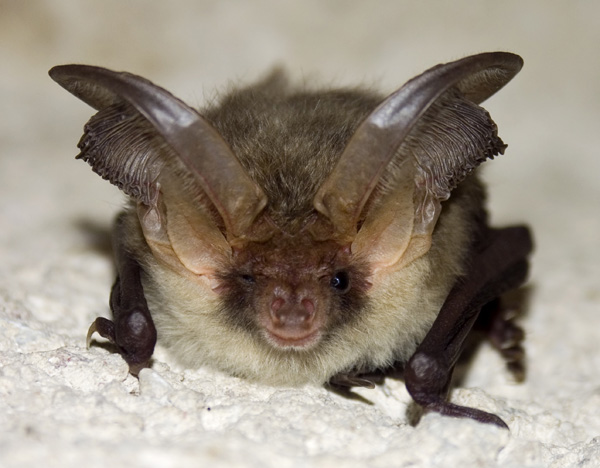
The Energy Department has allotted more than $1.75 million for the development of technologies to help reduce any impacts of wind farms on sensitive bat species.
The Energy Department has announced more than $1.75 million for five projects that will develop and demonstrate technologies to reduce the potential impacts of wind farms on sensitive bat species.
A current challenge facing wind energy developers in the United States is how to protect wildlife while responsibly deploying and operating this reliable source of clean energy. As wind energy continues to grow as a major supplier of renewable electricity in communities throughout America, new mitigation techniques and technologies could help minimize its environmental impacts to bats and other sensitive wildlife.
This funding will support projects in two research categories. Projects in the first category will focus on innovative early-stage technology development—advancing proof-of-concept designs, and developing and testing technology prototypes.
- Texas Christian University, Fort Worth, Texas — Texas Christian University will develop and test coatings that alter the surface texture of wind turbine towers to potentially deter bats from approaching them.
- Frontier Wind, Rocklin, California — Frontier Wind will develop and test an ultrasonic acoustic deterrent system comprised of an array of electric ultrasonic transmitters mounted along the length of turbine blades. High-frequency sounds from these transmitters will cover the entire turbine rotor.
- University of Massachusetts, Amherst, Massachusetts — The University of Massachusetts, Amherst, will develop a blade-mounted ultrasonic whistle. As air flows over the wind turbine blade, the device will produce a deterrence signal. The project will address the challenge of deterring bats across the entire wind turbine rotor and test whether a pulsed-noise, similar to a bat call, can act as an effective deterrent.
Projects in the second research category will focus on technology demonstration and validation by testing the effectiveness of existing near-commercial technologies at operational wind facilities. This work will serve as a critical step toward deploying commercially viable, proven tools for protecting bats.
Bat Conservation International, Austin, Texas — Bat Conservation International will conduct reliability tests for an electronic deterrent device and carry out a full-scale validation of its effectiveness at a wind plant. The project will also compare the electronic deterrent’s ability to reduce impacts to bats versus turbine curtailment—or turning turbines off when bats are most active—the primary mitigation measure currently in use.
General Electric (GE) Power & Water, Greenville, South Carolina — GE will advance the development of a turbine-integrated, air-powered deterrent device by refining its design based on lab testing and field tests at an operating wind plant.
This important research builds on the Wind Program’s work to remove barriers to wind power deployment and increase the acceptance of wind power technologies by addressing siting and environmental issues. These technologies, if successful, will protect wildlife and also provide the wind industry with new tools to minimize regulatory and financial risks.
The Department’s Office of Energy Efficiency and Renewable Energy accelerates development and facilitates deployment of energy efficiency and renewable energy technologies and market-based solutions that strengthen U.S. energy security, environmental quality, and economic vitality. For more information on our research and development work in this subject area, see the Wind Program’s Enviornmental Impacts and Siting Web page.
Office of Energy Efficiency and Renewable Energy
http://energy.gov/eere
Filed Under: Financing, News, Policy





Here’s an idea to make wind turbines less harmful to birds and bats; he quit them with a device that emits a sound that it’s so annoying to them that it keeps them away. I’ve also seen articles talking about a new type of ‘bladeless wind turbines’ so hopefully these projects will actually look into these.